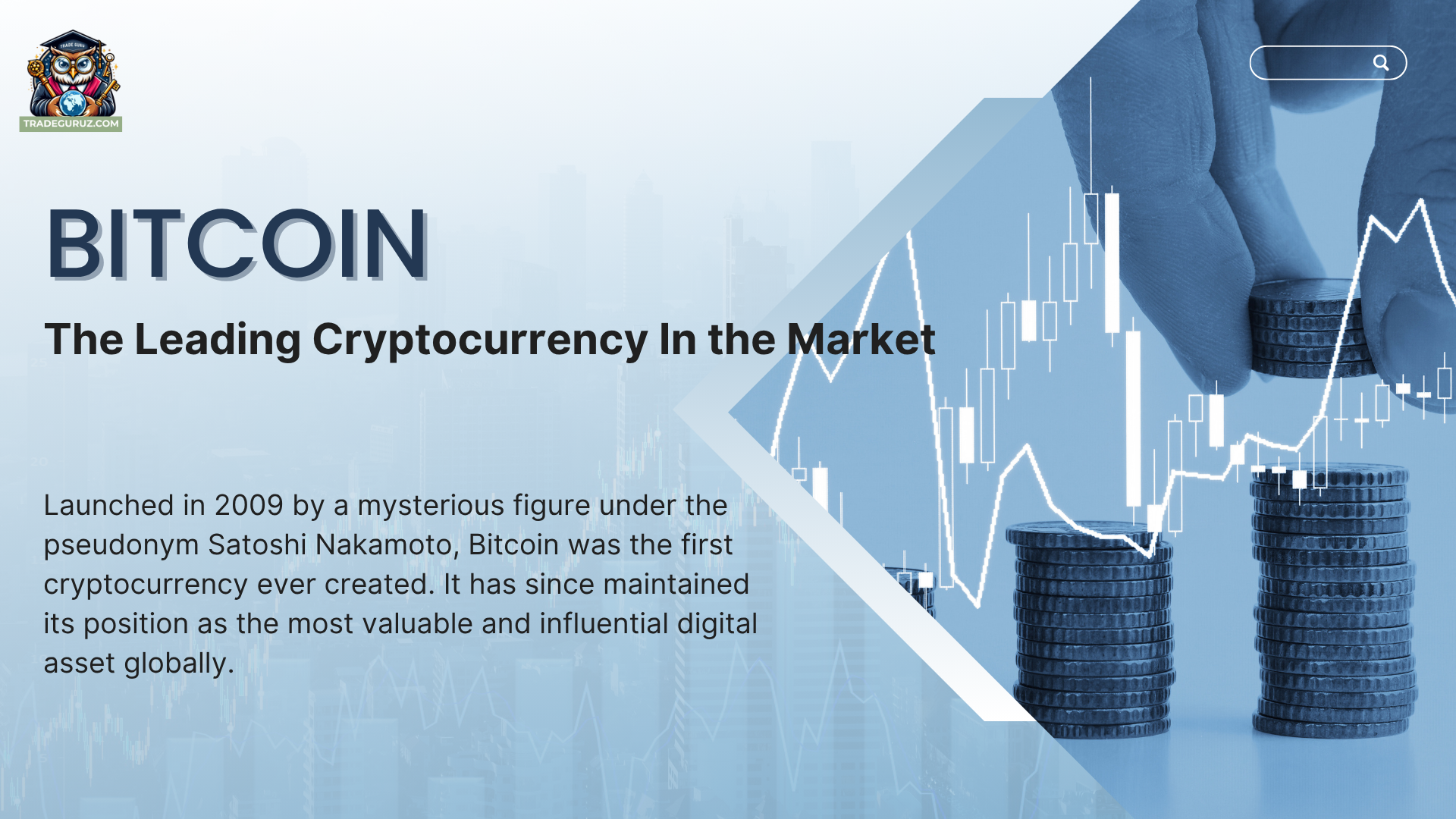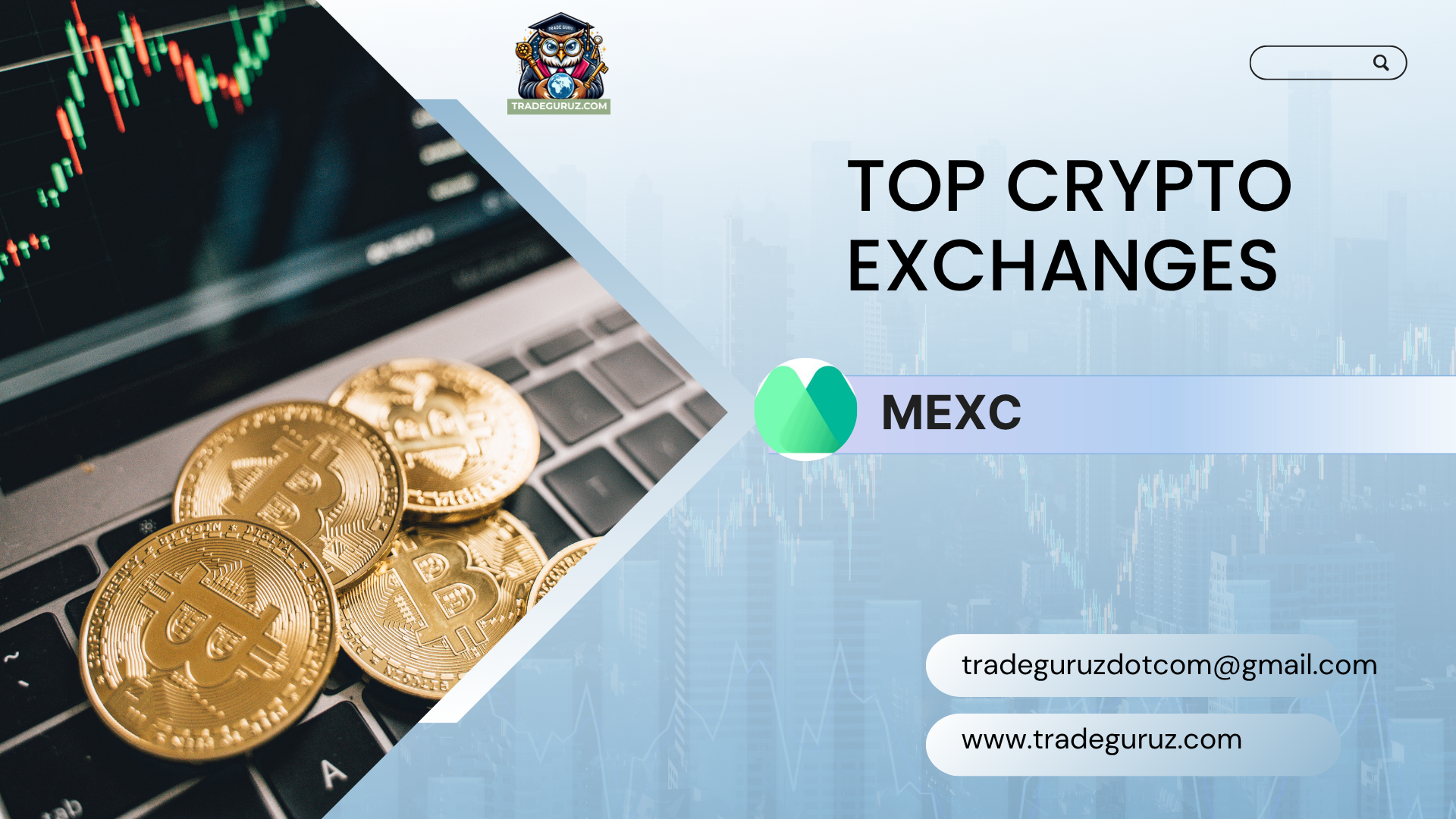



In 2025, Bitcoin is making a powerful comeback, fueled by a combination of institutional capital inflows, clearer regulatory frameworks, and major technological advancements. With the development of cryptocurrency in general and Bitcoin in particular, understanding what drives Bitcoin value and selecting a trustworthy trading platform has become more crucial than ever. How does Bitcoin fluctuate? What is shaping its price trends in 2025? Let’s follow this article.
The cryptocurrency market is extremely diverse, but if one name stands out, it is undoubtedly Bitcoin. Launched in 2009 by a mysterious figure under the pseudonym Satoshi Nakamoto, Bitcoin was the first cryptocurrency ever created. It has since maintained its position as the most valuable and influential digital asset globally. As of 2025, Bitcoin boasts a market cap of over $2 trillion. Additionally, Bitcoin also plays a leading role in the entire cryptocurrency market. Every Bitcoin's fluctuation has affected other altcoins, making it a primary measure for the crypto market.

Unlike fiat currencies such as USD, VND, or EUR, which are issued and controlled by central banks, Bitcoin operates independently, not controlled by any government or bank. All transactions are transparently recorded on a system known as the blockchain, ensuring unparalleled transparency. With a limited supply of 21 million BTC, Bitcoin is immune to inflation and is often referred to as “digital gold.” Over time, Bitcoin has gained global recognition, with an increasing number of companies recognizing it as a legitimate payment method. Investors not only hold Bitcoin as a long-term asset but also use it as a legal payment method.
As 2025 began, Bitcoin broke through the $100,000 barrier for the first time, reaching $102,229 on January 7. Just two weeks later, on January 21, after MicroStrategy announced a new $1.1 billion Bitcoin purchase, Bitcoin's price hit its first all-time high of the year at $109,993. Mid-year, Bitcoin again stole the spotlight by hitting a new ATH of $112,000 on May 22 - coinciding with “Bitcoin Pizza Day,” the first known real-world transaction using Bitcoin. This milestone pushed Bitcoin’s market capitalization past $2.2 trillion, putting it on par with technology giants such as Amazon and Google.
Notably, on June 6, the market witnessed a sudden plunge when Bitcoin price fell to $100,984, signaling a deep correction.
In 2025, Bitcoin’s value will depend not only on supply and demand but also on other factors. So what are those factors? All will be revealed right now.

Following the U.S. Securities and Exchange Commission's (SEC) official approval of spot Bitcoin ETFs in January 2024, the market experienced a significant influx of capital from major financial institutions. Once these ETFs were listed on the Nasdaq and NYSE, investment funds and large corporations began investing in Bitcoin. As of the second quarter of 2025, the total assets under management (AUM) of Bitcoin ETFs in the U.S. surpassed $132 billion, reflecting their growing scale and reach. In May 2025 alone, BlackRock’s IBIT fund attracted over $6.35 billion in net inflows, followed by Fidelity’s FBTC fund with more than $2.1 billion.
Owning Bitcoin through ETFs makes it easier for financial institutions to access cryptocurrency. This steady capital inflow has provided strong support during short-term market corrections throughout the first half of 2025. The clear backing from reputable names has boosted market confidence in Bitcoin’s long-term value, serving as a crucial catalyst for sustaining and expanding its upward momentum this year.
2025 is considered to remain a challenging year for the global economy, with inflation continuing to be a significant concern. Since cryptocurrencies like Bitcoin cannot be printed like fiat currencies, they have become a safe haven during inflation. In the U.S., the Consumer Price Index (CPI) in the second quarter of 2025 still fluctuated around 2.3 - 2.5%, while the Eurozone recorded 2.6% and Japan 2.85%. Though these figures are within control, noticeable price disparities remain.
More importantly, trust in central banks’ ability to manage monetary policy is wavering. Many believe that any geopolitical shock could trigger governments to print more money and ignite another inflation spiral. In this context, with a capped supply of 21 million coins, Bitcoin reaffirms its name as “digital gold.” As a result, more investors are turning to Bitcoin as an investment method that is immune to inflation, driving its price to grow strongly in 2025.

A key turning point in 2025 is the positive shift in the regulatory framework for cryptocurrencies. In the U.S., following the election of President Donald Trump, his pro-crypto statements quickly translated into policy. The new administration accelerated the development of clearer and more crypto-friendly regulations.
Meanwhile, in Europe, the Markets in Crypto-Assets (MiCA) regulation came into full effect by the end of 2024 and started being thoroughly enforced in 2025. MiCA is the world’s first comprehensive law dedicated to digital assets within the EU, aiming to promote fair competition and enhance consumer protection. The emergence of clear regulatory frameworks not only legitimizes Bitcoin-related activities but also paves the way for traditional financial institutions to engage more deeply in the cryptocurrency market. As Bitcoin is put into the legal framework, investor confidence strengthens, encouraging continued large capital inflows that positively support its price.
Alongside regulatory policies, technology plays a crucial role in shaping Bitcoin value. The Lightning Network, a Layer 2 scaling solution enabling near-instant transactions at very low fees, is becoming increasingly widespread. Its adoption facilitates the daily use of Bitcoin for payments, especially in regions with weak or unstable banking systems.
Furthermore, privacy-enhancing technologies such as Silent Payments and more user-friendly custodial wallets are making Bitcoin safer and easier for users. These technological breakthroughs in 2025 have expanded Bitcoin’s applications and increased its utility, thereby providing strong support for the coin’s value growth.
Bitcoin's impressive growth in 2025 is just the start; future predictions for Bitcoin are more optimistic than ever. More people are now considering it as a promising investment opportunity. However, to maximize profits and minimize risks when investing in the world’s largest cryptocurrency, choosing the right crypto exchange is extremely important. Below are 3 highly reputable exchanges in 2025, suitable for both beginners and professional investors.

Bybit is not only an ideal platform for Bitcoin trading but is also known as the most popular derivatives exchange. Its biggest advantage is its lightning-fast order execution with almost zero latency, allowing traders to seize opportunities in this fast-moving market. The platform supports leverage up to 125x, making it an attractive playground for risk-takers. Of course, high leverage comes with significant risks, requiring investors to have solid knowledge and skills.
On the security side, Bybit implements advanced security measures like multi-signature wallets and two-factor authentication (2FA). Moreover, Bybit stores over 95% of user assets in cold wallets, completely offline and protected from cyberattacks. Thanks to that, it has built a strong trust base of over 70 million users. With these advantages, Bybit is a top choice for Bitcoin investors seeking a safe, efficient, and professional trading experience.

How to Create a Bybit Account: Simple Guide for Beginners
MEXC is a go-to exchange for investors seeking diversity in digital assets, delivering access to over 2,000 cryptocurrencies. It is currently present in over 170 countries and regions, attracting more than 30 million global users. Due to its strong liquidity, with average daily trading volume sometimes exceeding $4 billion, investors can easily buy and sell Bitcoin and various altcoins without worrying about significant slippage.
Mexc always strives to protect user assets. The exchange maintains a reserve ratio exceeding 100%, allowing users to withdraw at any time without risk of mass withdrawal. Additionally, MEXC has a Futures insurance fund valued at over 540 million USDT to cover margin losses beyond limits, ensuring secure trading. MEXC also offers a multilingual interface with localized content, providing an intuitive and easy-to-use experience, especially for newbies.

How to Create a Mexc Account: Step by Step Guide for Beginners
The last name on the list is KuCoin - one of the top 10 most popular centralized exchanges with large trading volumes. Statistics show that 1 in every 4 cryptocurrency holders globally uses KuCoin. The exchange has expanded its operation scale to over 200 countries, with a 24-hour trading volume reaching $6.38 billion. It features over 900 coins and a comprehensive ecosystem, including spot trading, futures, staking, lending, and trading bots. Its standout feature is a user-friendly interface packed with advanced tools, suitable for both beginners and seasoned traders.
Similar to Bybit and Mexc, Kucoin proves its excellence with a variety of security features, covering two-factor authentication and email verification codes. This helps prevent unauthorized account access, providing users peace of mind when trading on the platform. If you want to invest in Bitcoin, KuCoin is an ideal exchange to accompany you.

How to Create a KuCoin Account Easy Steps for New Users
Amid waves of innovation and continuous capital inflows, Bitcoin maintains its position as the world’s leading digital asset. Despite market fluctuations, by understanding the key drivers behind Bitcoin value and choosing reputable exchanges like Bybit, MEXC, or KuCoin, you can confidently pursue your Bitcoin investment journey in 2025.
Thank you for spending the time reading this article.
For more information, please contact us at TRADEGURUZ.